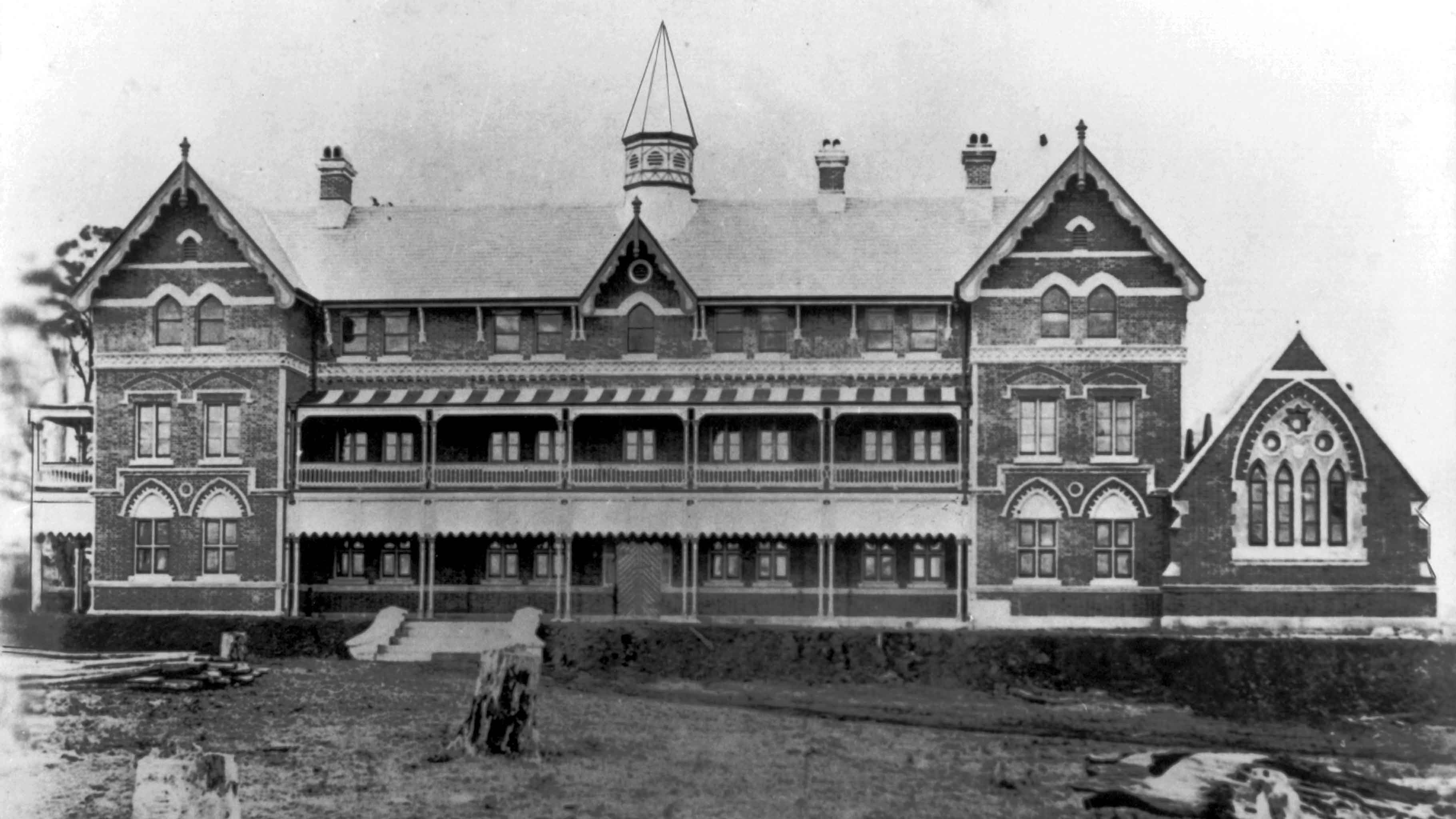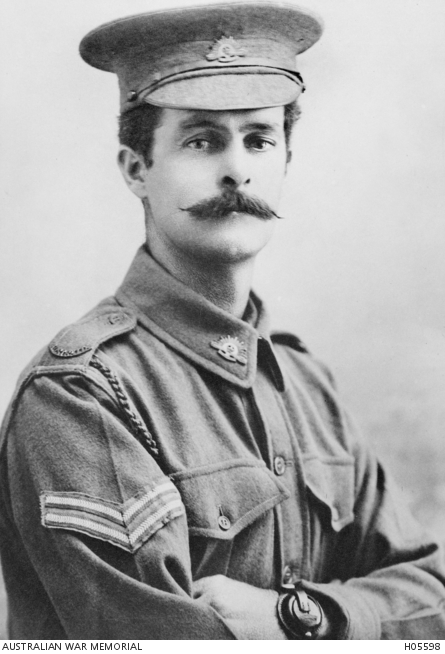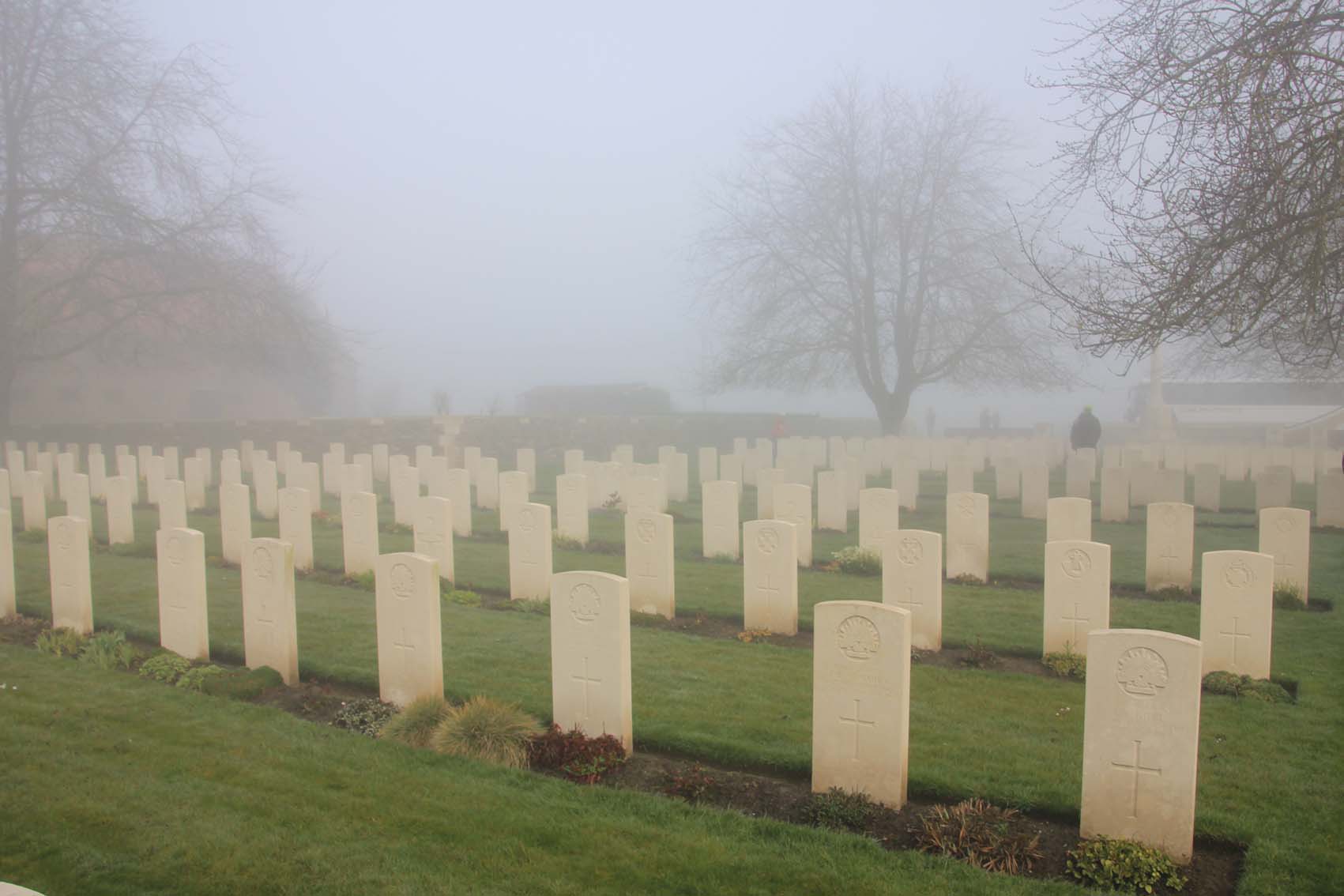Andrew John Renwick was a mature man in his late 30s when he went to war in 1916. He was born in Toowoomba and attended the Toowoomba Grammar School, graduating in 1895. He was the son of James (a well-known Toowoomba builder, deceased 1909) and Harriet Sarah Renwick (nee Hemsworth) of “Carlourie”, Margaret Street, Toowoomba. Andrew enlisted in Brisbane on 22 September 1915. He wrote “builder & contractor” as his occupation, with which skills he was a natural posting to the engineers. Within a few days of enlistment, he was taken on strength by his corps in Melbourne. Andrew gave his age as 36 years; he was almost 5’9” tall and weighed 138 pounds. His complexion was described as “sallow”, with black hair and hazel eyes, and he was of the Church of England religion.
The embarkation point for the 11th Engineers is not a common one for Queenslanders in the AIF – Outer Harbour, South Australia. Andrew sailed on the A29 Suevic on 31 May 1916 and arrived in England 52 days later, disembarking at Devonport. As Andrew’s training continued in England, the Battle of the Somme raged in France. In late autumn when the battle waned he was posted overseas, leaving England on 24 November 1916. His unit was part of the new 3rd Division, being deployed for the first time at the front.
Andrew’s experience of the front lines lasted over seven months, including the worst winter for many years. His division made a successful attack at Messines in June 1917. The Germans counter-attacked strongly, but the Australians held their gains. On 29 June the engineers were working on improving dugouts in the front-line trenches. A combination of weather and the need to move around cost Andrew his life. Private J. Lyall gave this account to the Red Cross: I saw him killed by a snipers bullet at Stegners Farm, Messines. We were going up to the front line supports at the time and the bullet caught him in the small of the back, passing first through the front of my tunic. I ran back to him but he just gasped the word “Mother” and then died. Later we carried him out and buried him in Wulverghem Cemetery. We erected a cross over the spot and the RC chaplain of the 3rd Division conducted the burial service.
Another of Andrew’s mates, Private J. Wegman, added this observation, . . . (the) trenches in Warneton there was a good deal of water in them . . . and he had not got his gum-boots on; he was walking along the top of the trench when he was sniped. In 1918 Harriet wrote to the army passing on information she had received from a returned friend of Andrew’s with details of his death, but also expressing concern about his possessions which this soldier had personally packed for shipment to London. Nothing had arrived in Toowoomba to that point. Fortunately, two months later two parcels of his effects arrived, almost a year after his death.
Andrew died at 39 years of age; today, he lies in the Kandahar Farm Military Cemetery in Belgium, ten kilometres south of Ypres (grave II.E.14).
Toowoomba Grammar School Archive Records state that he started school on 1st February 1892 and left on 20th December 1892. This was the year when the Cadet Unit was established at the school. The School Magazine dated November 1917 states: RENWICK, ANDREW JOHN – Son of Mrs Renwick, of Margaret St., Toowoomba. Corporal 11th Field Engineers – Killed in action in France, 29th June, 1917.
External Links:
National Archives of Australia Military Records
Australian Red Cross Society Wounded and Missing
Australian War Memorial Honour Roll
AWM4 AIF unit war diaries 14/30/8 11th Field Coy, June 1917
Australian Engineers in the First World War | Australian War Memorial (awm.gov.au)
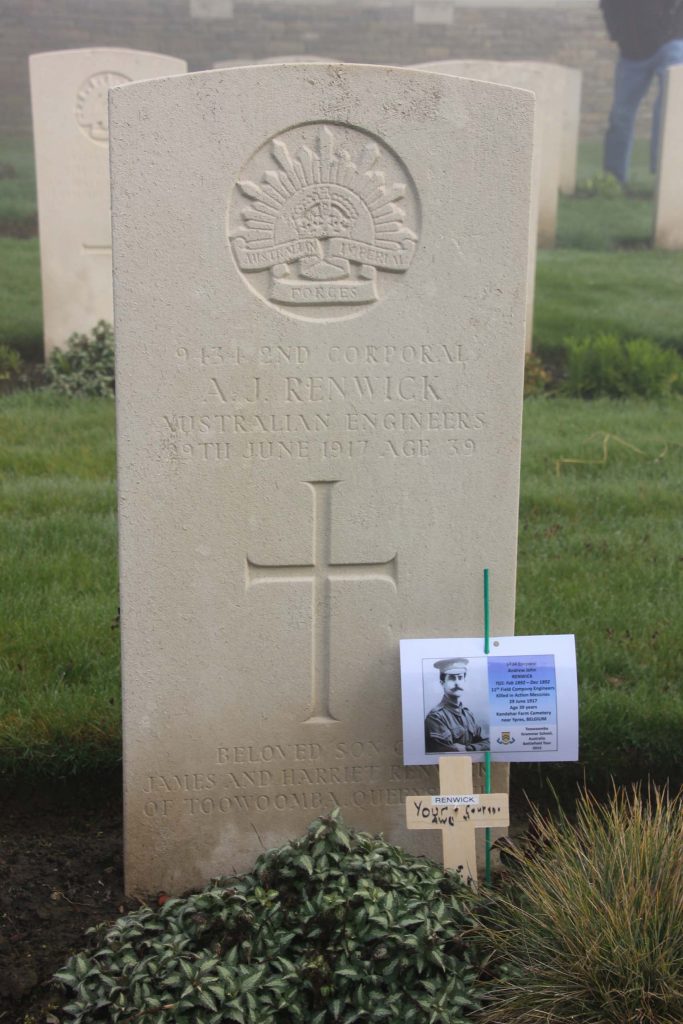
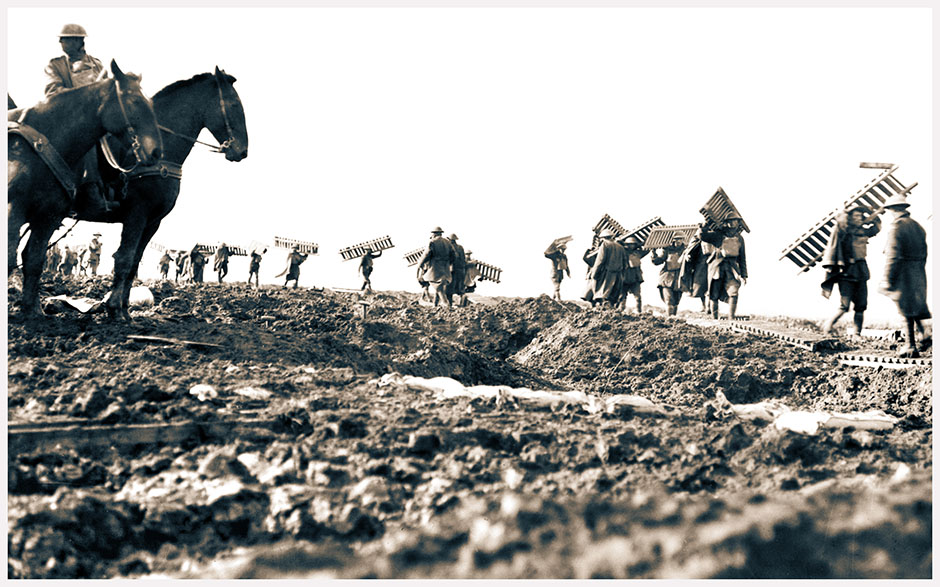
Engineers of 1st DIV carrying duckboards near Zinnebeke, Broodseinde Ridge, 5 October 1917
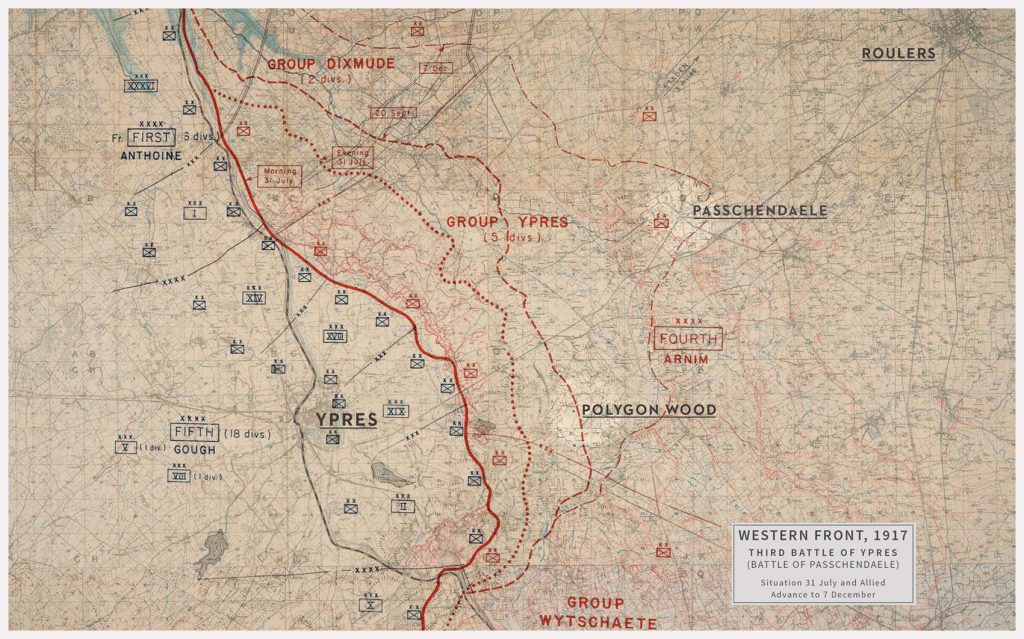
The Battlefield of Ypres Third Offensive 1917
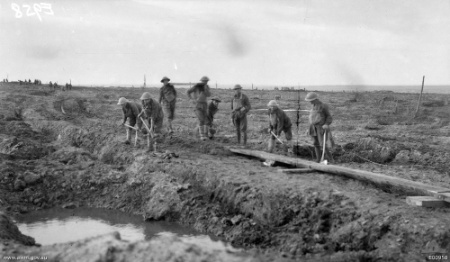
Ypres October 1917 near Albania Woods

